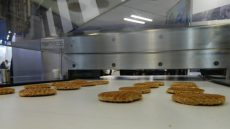Review examines current state of sealing technology
problems food packagers face when applying technologies.
The review, published by the UK-based Campden & Chorleywood Food Research Association Group, provides a comprehensive overview of the current state of sealing technology, problems and solutions to ensure seal integrity, and testing methods in use.
Seal integrity is important to maintain a safe and good quality product, says Campden & Chorleywood authors Lynneric Potter; Emma Lloyd and Alan Campbell.
Sealed packages are used in a wide range of products such as ready meals, confectionery, chilled prepared salads and modified atmosphere packaged produce. Seals have to stand up to storage conditions ranging from ambient, through to chilled and frozen.
"However, the technology used for the manufacture of these types of seals is different and detailed knowledge is limited outside specialist manufacturers," they stated in the review.
They emphasise that a processor's choice of a sealing method depends on the costs associated with the equipment, line speed, packaging materials and product.
For example a heat seal is not appropriate for temperature-sensitive confectionary products, so a cold seal must be used instead. Likewise, a cold seal is not appropriate for heat processed or oxygen sensitive products.
Parameters for ensuring a proper seal include the choice of adhesive, temperature; pressure, dwell time and jaw design, the researchers state in the review.
The review also examines the market for instruments used to measure and test the strength of the seal or to identify any leaks or defects in the sealing area. These include burst and creep tests; tensile seal strength, peel tests and physical tests, such as the drop and squeeze methods.
Vacuum tests, dye penetration and leak detectors are used by the industry to detect leaks and their position in the sealing area. Ultrasonic imaging; scanning laser acoustic and infrared imaging are other more technical methods.
"The seal integrity testing method selected will depend on the product and shelf life," the researchers stated. "A bio test method that can take from a few days to weeks to obtain results is not suitable for a short shelf life chilled product."
Sealing methods are broadly divided into heat and cold seals. Heat seals use a polymeric weld, which may also be peelable. Cold peels use an adhesive coating to make the closure. Within the two branches seals are classified into a total of 13 different types: bar, band, impulse, ultrasonic; hot melt, dielectric, magnetic, radiant, solvent, laser, hot air, radio frequency and induction.
An appendix lists 32 common seal defects and for some, provides photographs of what they look like.



